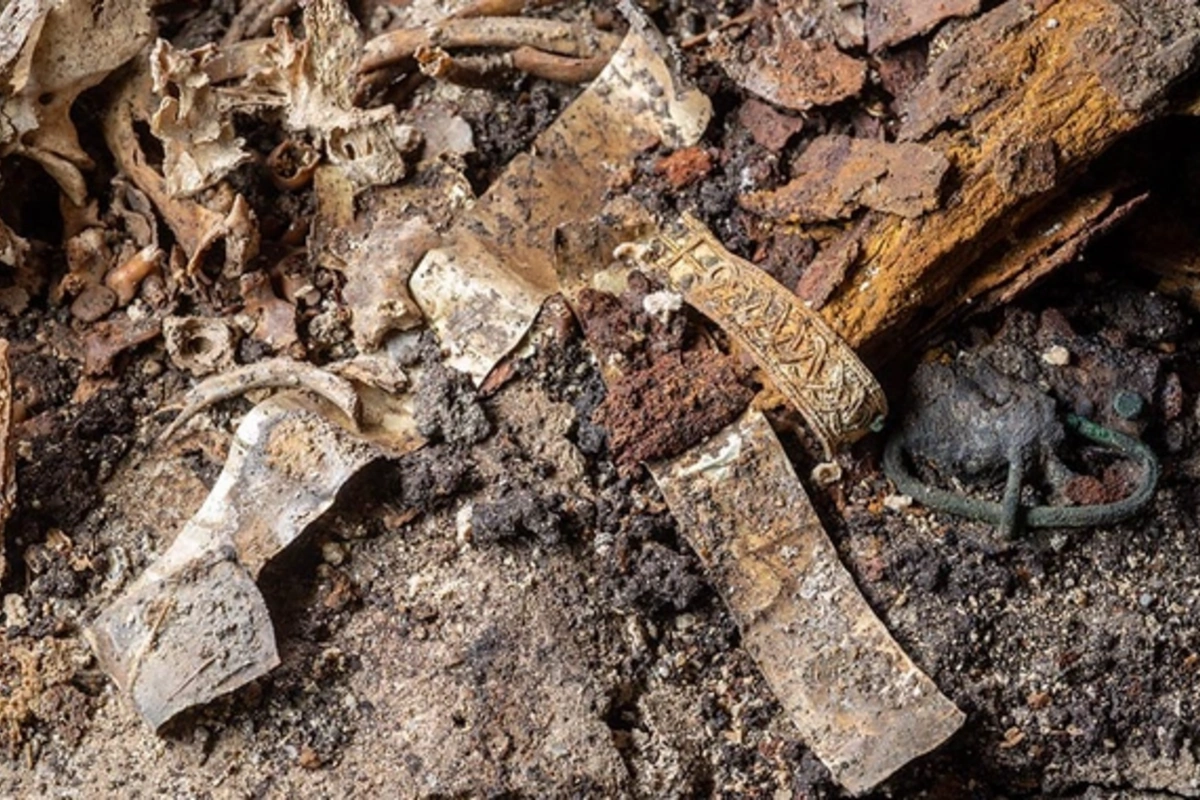26 May , 15:53
0

📍 Bavaria | 🗓️ May 2025 | 🕒 3 min read
Almost four years after a sensational discovery in Germany, archaeologists have completed a full analysis of a mysterious tomb, which has been dubbed the Ice Prince's grave. It's a burial of a small boy from the 7th century, found in surprisingly luxurious surroundings near the village of Tussenhausen in Bavaria.
This is not just a beautiful name - scientists actually froze the tomb with liquid nitrogen before extracting it from the ground. This revolutionary technology allowed them to preserve invaluable fragile remains and unique organic materials: exquisite silk, leather, and wood.
Experts from the Bavarian State Office for Monument Protection (BLfD) developed an innovative methodology: they reinforced the tomb with wooden shields, froze the contents layer by layer, and extracted it as a single monolithic block. After transportation to a specialized laboratory in Bamberg, meticulous work began: gradual thawing, stabilization, comprehensive DNA research, and analysis of numerous artifacts.
The boy passed away between 670 and 680 CE at the age of about 1.5 years. He had blue eyes and light hair, as established by genetic analysis. The cause of death was sepsis, caused by a common ear infection - a tragic fate typical for the era before antibiotics.
Research confirmed that the child was born and raised in the same region. He was undoubtedly a member of the elite, whose family could afford such precious rarities as eastern silk from Byzantium, exquisite silver, and weapons of the finest handcraftsmanship.
The little one was carefully laid on fur, dressed in a linen shirt with Byzantine inserts, leather pants, and shoes. His wrists were adorned with silver bracelets, his shoes featured silver spurs, and at his waist hung a sword in a leather scabbard with gold details.
Researchers were particularly intrigued by a mysterious fabric with a cross-shaped gold insert, possibly connected to the early spread of Christianity in the region.
Next to the body were:
a bronze basin and comb (for ritual washing),
wooden bowls,
a silver-rimmed drinking cup,
food offerings - hazelnuts, apples, a pear, and a piglet (not a dog, as erroneously believed earlier).
These items symbolized a funeral feast, a kind of solemn farewell and invitation to the other world.
The building where the Ice Prince was buried is a repurposed Roman structure. After the burial, it was rebuilt at least twice, turning into a true memorial complex where commemorative rituals were likely performed for many years.
"T